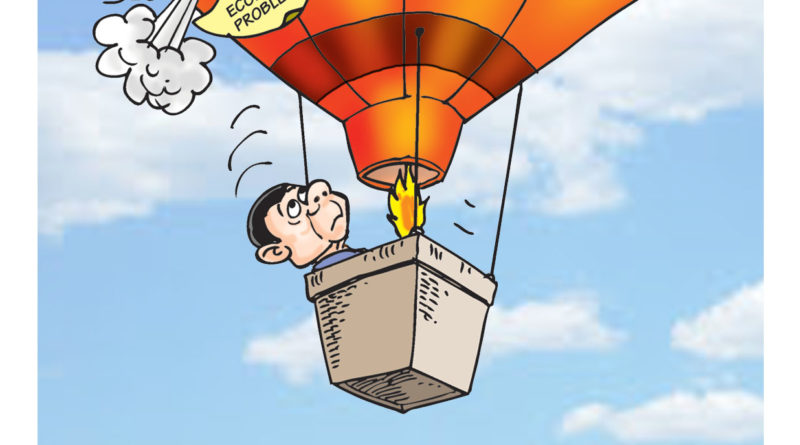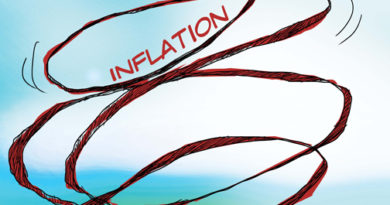OP ED EDITORIAL & CARTOONS: Manila Bulletin–Still ‘very good’ but drop in rating must be stopped

Philippine presidents have all historically begun their administrations with high expectations and support from the people, then gradually tapering down as problems arose. Days before his inauguration in June, 2016, President Duterte received a personal record high of plus-79 as his trust rating in the Social Weather Stations survey for the second quarter of that year. The SWS deemed this score “excellent.”
The President continued to score “excellent” in the next four quarterly surveys. Then in the sixth survey in the quarter ending December, 2017, his trust rating fell to plus-75. It dropped to plus-65 in March, 2018. Last Sunday, in the latest survey of June, 2018, the trust rating fall further to plus-57.
Despite these three successive quarterly drops, the President’s rating is “very good,” in the assessment of SWS. This is so much better than the ratings of some previous presidents, which fell to as low as plus-6 at one time during the Arroyo administration and plus-5 during the Estrada administration.
Nevertheless, administration leaders should make an effort to determine what may have caused this steady drop in the President’s trust rating for three quarters now – nine months since December, 2017. Before the drop, the administration engaged in an all-out campaign against the drug menace, with thousands reported killed in the course of the drive led by the Philippine National Police, until it was replaced by the Philippine Drug Enforcement Administration. But during all that time, the presidential trust rating remained “excellent,” so the drug campaign was apparently was not a factor in the survey.
Very likely, the critical factor was rising prices – inflation to economists – which started around January this year. There were many other issues in the following months, among them the smuggling of drugs worth billions of pesos, efforts to cancel the 2019 midterm elections in the effort to draft a new constitution for federalism, killing of several priests at one time, a police campaign that rounded up thousands of “tambays.” But the rise in prices dominated the public’s attention. In one survey, the people listed as their foremost concerns the prices of goods, low salaries, and unemployment – all economic issues.
The administration has a host of concerns that it needs to attend to – our claims in the South China Sea, our need to strengthen our military forces, our relations with the United States, Russia, China, and other nations, the break in peace talks with the New People’s Army, new reports of violence in Mindanao, etc. We have also been hit by a series of floods from the “habagat” monsoon rains intensified by one Pacific storm after another.
On all these issues, the President and his men have done very well. But the latest SWS survey shows a continuing drop in the President’s trust rating. We can only surmise that people are feeling — more than the effects of these many other issues – the economic problems that have been worsened by the record inflation, the market prices that continue to rise, affecting the daily lives of their families.
.
7.1. Dots form yellow plot– D. Tribune –What’s cooking?-
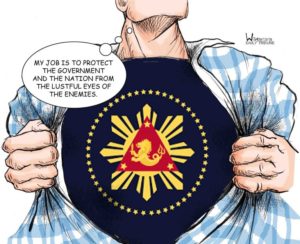
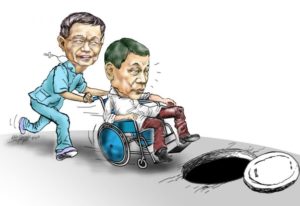
7.2. Manila Bulletin – Still ‘very good’ but drop in rating must be stopped

.
7.3. The Manila Standard –

7.4. The Manila Times – BOOMERANG EFFECT
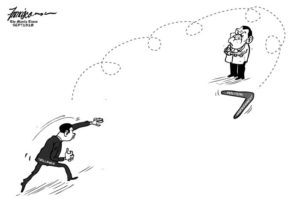
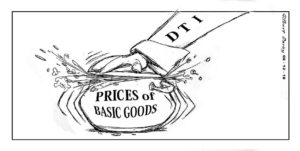
7.6 The Philippine Star – Financing campaigns

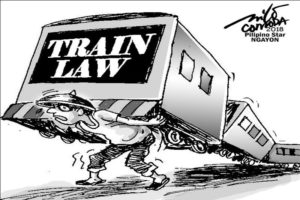

8.0. The Straits Times

The Straits Times says:
A time of reckoning for Pakistan
.
Left with foreign currency reserves that can buy two months of imports at most, the result of years of imprudent economic stewardship which let imports balloon and exports shrink, Pakistan is staring at debt default. Prime Minister Imran Khan must soon decide whether to approach the International Monetary Fund (IMF) for a bailout – a process that will reveal both the depth of his government’s enthusiasm for China’s Belt and Road Initiative and the success of an attempt under way to reset Islamabad’s shaky ties with the United States.
US Secretary of State Mike Pompeo had expressed reservations in July that the IMF funds would be funnelled into servicing Pakistan’s biggest creditor, China, to pay off debt incurred on the grandest project conceived under President Xi Jinping’s trillion-dollar Belt and Road Initiative: the US$62 billion (S$85 billion) China-Pakistan Economic Corridor connecting China’s Xinjiang province to Pakistan’s south-western Gwadar port.
:
TO READ THE FULL ARTICLE: https://www.straitstimes.com/opinion/st-editorial/a-time-of-reckoning-for-pakistan
.
 All photographs, news, editorials, opinions, information, data, others have been taken from the Internet ..aseanews.net | [email protected] |.For comments, Email to :D’Equalizer | [email protected] | Contributor
All photographs, news, editorials, opinions, information, data, others have been taken from the Internet ..aseanews.net | [email protected] |.For comments, Email to :D’Equalizer | [email protected] | Contributor

